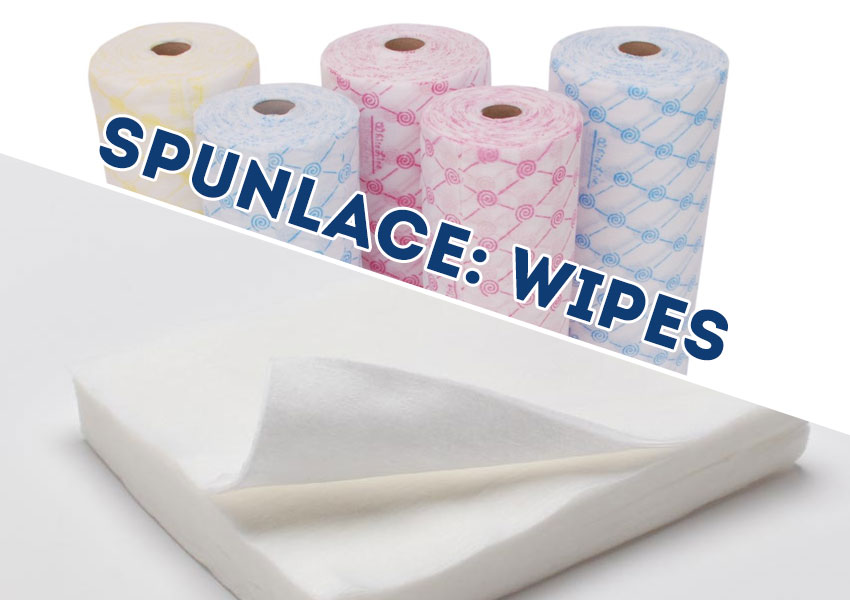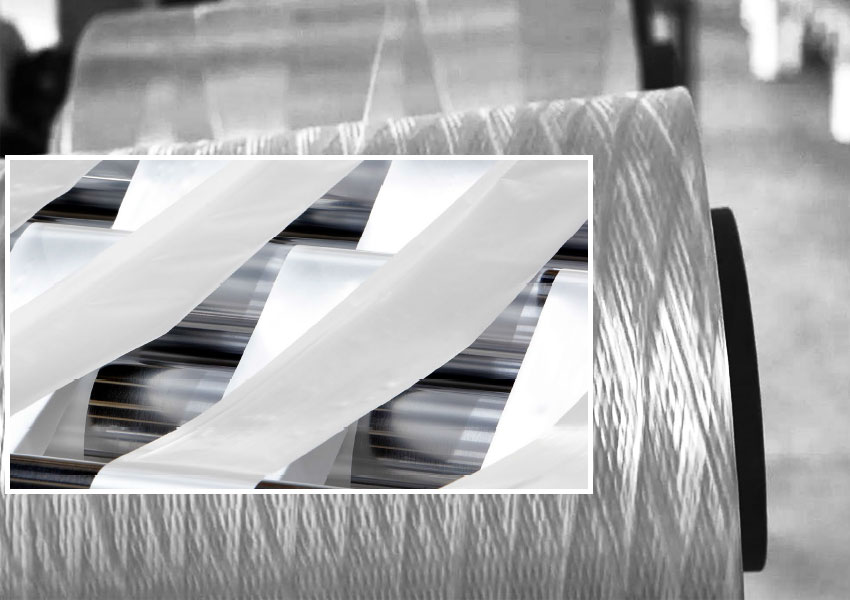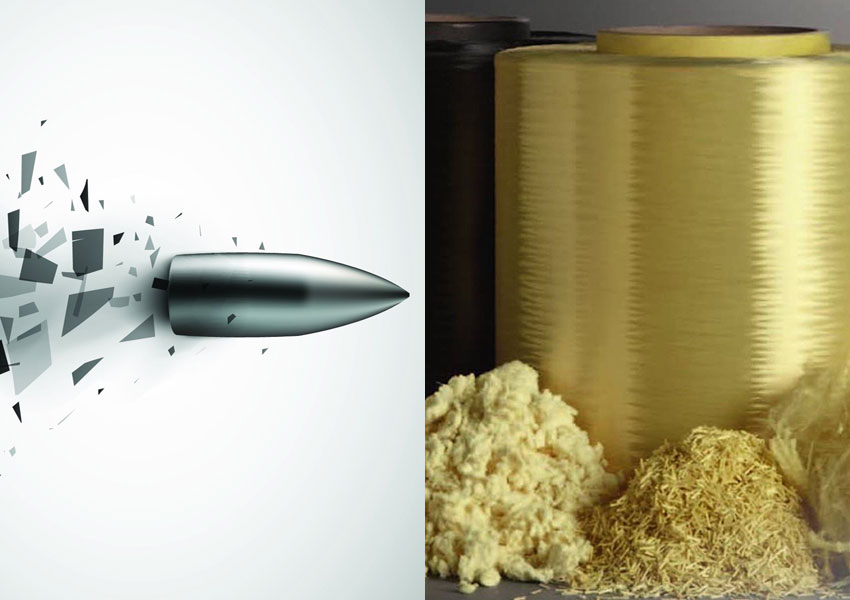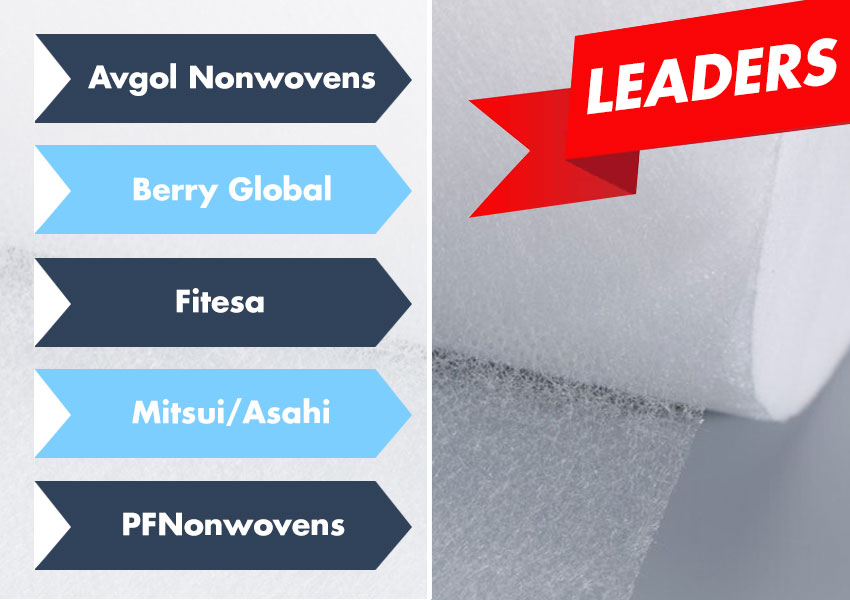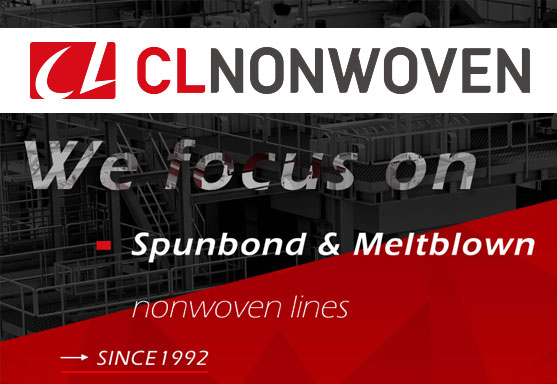Publications
Last
Advertisement
Partners


Spunlace 2023 - a new reality: the economy of the industry and further prospects for innovative development
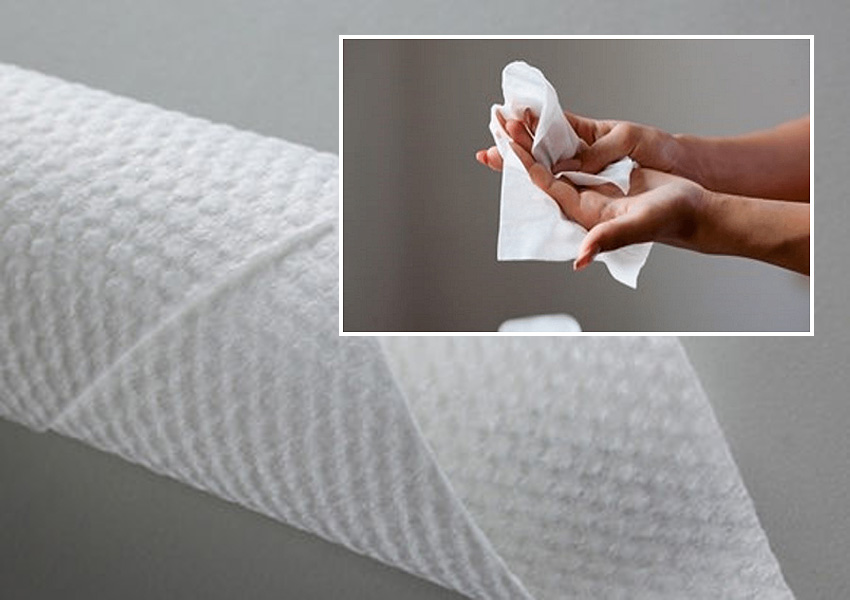
After several years of unprecedented demand and ambitious investments, manufacturers of nonwovens "spunlace" are looking for new ways to provide their services to customers both in the napkin market and in other high-tech markets.
The increased demand for disinfecting wipes during the Covid-19 pandemic in 2020 and 2021 led to unprecedented investments in nonwovens "spanlace" - one of the most preferred materials on the napkin market. This increased the global consumption of nonwovens "spanlace" to 1.6 million tons or $7.8 billion in 2021. Although demand remained high, it declined, especially in segments such as cosmetic facial wipes.
As demand normalizes and capacity continues to increase, nonwovens manufacturers "spunlace" are reporting difficult conditions that are further exacerbated by macroeconomic conditions such as global inflation, rising raw material prices, supply chain problems and regulations restricting the use of single-use plastics in the production of nonwovens in some markets.
In its latest income statement Glatfelter Corporation, a manufacturer of nonwovens that diversified its production through the acquisition of in 2022Jacob Holm Industries (acquisition of Jacob Holm includes assets in North Carolina, France and Germany) – a well-known manufacturer of materials «spanlace», reported that both sales and profits in this segment were lower than expected. "In general, we have more work to do in the area of developing a strategy for the implementation of spunlace materials than was originally expected," says CEO Thomas Fanemann. "The segment's performance to date, as well as the depreciation loss we have incurred in relation to this asset, are a clear indication that this acquisition is not what our company originally expected."
CEO Thomas Fanemann, who assumed a leadership role in Glatfelter, the world's largest manufacturer of materials "airlade", after the purchase of Jacob Holm in 2022, told investors that "spanlace is still considered suitable for the company, as this acquisition not only gave the company access to a strong brand Sontara, but also provided a new production platform to complement the production of materials";airlade» and composite fibers.
Linda Kelly, Senior Vice President of the company Suominen for North and South America and business development, also noted that profitability problems are not only in the spanlace segment, but also in the nonwoven industry materials in general.
"It is difficult to make a profit in the nonwovens market, given the current market conditions with high raw material costs, rising energy costs and volatile working conditions," she says. "We are also seeing increased competition with nonwovens from Asia and other parts of the world."
As for napkins, in late 2020 and early 2021, many large buyers, especially in North America, accumulated materials during the pandemic and stopped buying overnight, according to Kelly. "Considering all the challenges and changes in the market, we had to rely on the speed of reaction to changing market conditions, which is not a cost-effective way of doing business, because, as a rule, there are delays when it comes to the cost of raw materials and the cost of delivery."raquo;," she adds.
For its part, Suominen remained conservative when it came to investments, even in the midst of Covid-19. Instead of investing in new lines, the company focused on projects to improve existing lines in Nakkil, Finland, Kress, Italy, and Bethune, South Carolina, with an eye to developing innovative products and environmental sustainability non-woven fabrics.
"The production of sustainable nonwovens on a competitive basis requires the optimization of production assets and processes for these products," adds Kelly. "These investments have given us good opportunities to support our strategic plans."
Similarly, Suominen seeks to close assets that cannot be improved or upgraded to match its sustainability strategy. At the end of December 2022, the company announced that it was starting consultations with local trade unions regarding a plan to stop production in Mozzate, Italy, where two existing lines are located, capable of processing only products made of traditional blended fibers (polyester and viscose). "The demand for products made from traditional blended fibers in Europe is declining," says Acting CEO and President Klaus Korhonen. "The production of sustainable nonwovens on a competitive basis requires production assets and processes optimized specifically for these products. Our lines at the Mozzata plant are not the best suited for environmentally friendly fibers, and this, combined with high operating costs, means that the plant is uncompetitive, and its competitiveness is not expected to improve significantly in the future. We constantly evaluate the efficiency and profitability of our assets, and in the current situation, unfortunately, we have come to the conclusion that we need to consider closing production at Mozzate to increase the competitiveness of our European business.
Texol-Orma focuses on premium segments to protect the marginality of its spanlace business. "The segment of goods (i.e. wet wipes) is under strict cost control and offers very low margins," says Leonardo DiGiseppe, sales and marketing specialist. "Demand is growing, but in most cases premium applications are still niche and therefore have limited consumption and a short production campaign."
Like most of the spunlace materials market, Texol-Orma has invested heavily in sustainable development, especially for the delivery of natural raw materials such as cotton and, more recently, hemp. The transformation of these natural fibers requires the use of a special sawn headset for carding, which creates some problems for manufacturers of rolled goods that still have mixed materials in their portfolio.
According to David Price, head of the industry consulting agency Price Hanna, the factors contributing to the increase in capacity vary depending on the region. "It is obvious that the demand for non-woven spanlace wiping materials has fallen worldwide since its peak in early 2021," he says. "Some of the capacities ordered during this peak were not put into operation until 2022, while some of the capacities scheduled for commissioning in 2023 were stopped due to weakening demand."
Over the past 24 months, capacity expansion has mainly been concentrated in developing regions such as China and Turkey, but even Western companies have sought to benefit from the growth of the napkin market. Company Berry Global recently completed work on the "spanlace" line in Kuike, the Netherlands, which allows it to develop eco-friendly materials for napkins and other products. Recognizing the ongoing goals of its customers in the field of environmental sustainability, the new asset includes the production of biodegradable or recycled nonwovens, significantly increasing Berry's capacity in Europe.
"This multi-million dollar investment complements our industry-leading portfolio. Thanks to flexible assets, such as this installation in Europe, we can better serve our customers with reliable and sustainable solutions for the napkin market," says Achim Schalk, Executive Vice president and General Manager of EMEIA Berry's Health, Hygiene and Specialties division.
Berry also planned to add a napkin-related asset to Spinlace's own facilities in North America, but later canceled this investment due to changing market conditions.
Meanwhile, another North American investment from Fibertex Nonwovens the second line for the production of materials "spanlace" at its enterprise in South Carolina, USA was implemented and, at the moment, this line serves the napkin market.
China still expects new investments in spanlace, including from Xinjiang Zhongtai Henghui Medical and Health Material Co., Ltd., which launched its first line in June 2022. The company is in the process of commissioning two more lines for the production of nonwovens of the "spanlace" type and plans to eventually operate 12 lines with a total capacity of 140,000 tons.
These are just a few examples of ambitious investments in spanlace by Chinese companies that not only respond to increased demand, but also pay attention to modern technologies that provide higher productivity and the ability to use sustainable raw materials.
China currently has the highest level of installation of new spanlace capacities. Thus, both new and existing manufacturers of "spanlace" materials reacted to the high demand for napkins as the Covid pandemic broke out in the country. Modern popular varieties of materials «spanlace» they dictate to producers their requirements for applying the advantages of technological advances in the field of productivity and adaptability to sustainable raw materials to increase the competitiveness of the region's products on the world market.
In India, the company Welspun recently completed the construction of the neXline line from Andritz for the production of materials «spanlace», capable of processing various fibers for the production of non-woven roll materials (napkin bases) at its new plant in Hyderabad, Telangana, India. The line has a maximum design capacity of 3 tons/hour. It allows Welspun to process various types of synthetic or natural fibers, such as polyester, viscose and cotton. The final product will have a density of 25 to 120 g/m2, which will allow it to be used in many areas. This neXline line also offers the possibility of integrating a third component from a set of intelligent layers into the material structure, which allows Welspun to produce products for the health and hygiene sectors.
Elsewhere in India, the company is a newcomer to the industry Tufropes, the world leader in the production of ropes and nets, at the beginning of last year installed a line of "spanlace" in Gujarat, India. Patented enhancements that were developed with partners Truetzschler and Voith, will allow Tufropes to produce any possible nonwoven fabric using hydro-interweaving, including biodegradable environmentally friendly non-woven materials made of natural fibers with high performance characteristics.
According to Arnaud Laroche, head of Equipment Sales «spanlace», Andritz Perfojet, investing in new lines is a way by which companies can increase their profitability both through synergy with existing lines, and by taking advantage of more efficient modern processing plants. "Some nonwovens market players have decided to increase their capacity (to increase profitability)», — he says. "This allowed them to reduce costs in euros per kilogram. Thanks to its long-term know-how, Andritz Nonwovens offers compact layouts of complete spunlace lines, which allow our customers to build smaller installations, reduce the total working area, emissions and energy requirements.
Innovations in the field of napkin production are focused on sustainable development
According to Phil Mango, author of the report Smithers «The future of nonwovens of the type «spanlace» until 2026», the largest end segment of the use of nonwovens «spanlace» today are wipes, and the pandemic-related surge in the consumption of disinfecting wipes has even increased his. In 2021, napkins accounted for 64.7% of the total consumption of "spanlace" in tons. The global desire to reduce the amount of plastic in napkins or to abandon it has led to the emergence of several new environmentally sustainable types of "spanlace" by 2021, which will allow "spanlace" to remain the dominant non-woven fabric for napkins until 2026. By 2026, the share of napkins in the consumption of non-woven spanlace materials will increase to 66%. Phil Mango adds that one of the most important factors of the last decade is the need to reduce or eliminate plastic in napkins and other disposable non-woven products. While the European Union directive on single-use plastics has become a catalyst, reducing the use of plastic in nonwovens has become a global incentive, especially for nonwovens "spanlace".
In addition to government regulations, consumer preferences and retail prescriptions also force napkin manufacturers - and, accordingly, their suppliers of spunlace roll materials - to reconsider the use of their raw materials. Several British retailers have already banned the sale of plastic-based napkins in their stores, and their suppliers have changed the formulation of their brand products to exclude plastic in them.
According to Marco Fano, marketing director of the equipment supplier Autefa Solutions, the demand for sustainable nonwovens is obvious and is the leading topic in most discussions with customers in all areas of nonwovens produced by the "spanlace" methodraquo;, from napkins to geotextiles and clothing. This is due to the ability of the latest technologies to consume up to 30% less energy compared to existing traditional spunlace production technologies. This opens up new markets, even for high-fashion products, such as artificial leather made from natural leather waste, and other environmentally friendly products, adds Fano.
Company Suominen, the world leader in the market of nonwovens produced by the spunlace method and other napkin materials, is a leader when it comes to sustainable development. "Sustainability is becoming increasingly important to our customers and other stakeholders," says Senior Vice President Linda Kelly. "We help our customers achieve their own environmental goals by offering them products made, for example, from renewable, recycled, compostable and plastic-free raw materials."
These new products include Biolace Pure, a 100% plant-based product with excellent cleansing ability, and Biolace Bamboo, bamboo-based substrate. Both of these products provide clear advantages in terms of reduced CO2 emissions and less environmental impact.
TAs part of the sustainability-oriented business strategy presented last year, Suominen has set a goal to increase sales of sustainable products by 50% by 2025 and launch more than 10 sustainable products per year.
According to DiGiseppe, the group Texol-Orma has invested heavily in sustainable development, especially in the supply of natural raw materials. "Cotton, hemp, and recently flax - processing of natural fibers requires a special carding wire (sawn headset), and this creates some problems for all manufacturers of rolled goods that still use mixed materials, that is, they use both natural and synthetic fibers."
New technological developments, such as a line consisting of two carding machines and an airlade aerodynamic styling unit, have allowed Orma-Texol to create a cross-weave fabric that is used in a non-plastic absorbent core in feminine hygiene products."We were able to develop an absorbent core consisting of 100% artificial fibers in combination with cellulose mass," adds DiGiseppe. "This is only the first step, as we have a development on the use of bast fiber instead of viscose and the use of "woodless" cellulose from other sources, such as hemp or cotton. This is how we want to stand out in the arena of sustainable development. These new developments in sustainable management are helped by the work of machinery and equipment suppliers who recognize that sustainability has become the most important task of the nonwovens industry.
Company Mogul, offering a diverse range of spanlace products, produces non-woven rolled materials from bamboo fibers - a cellulose material that is regenerated from a bamboo plant. In addition, the company can produce materials from 100% polyester on a biological basis or mixed products that have been specially developed for biodegradation in certain environments (landfills and oceans). In addition to standard offerings, Mogul currently offers both parallel and cross fiber stacking technology, as well as a unique bico-pet technology sold under the Madaline trademark. The presence of such a diverse range of products has protected the company from excessive dependence on the napkin segment.
"We are seeing a decrease in demand for wipes, especially for disinfecting wipes, the demand for which increased sharply during the pandemic, but still remains higher than before the pandemic," says Serkan Gogus, CEO of the company. "We are also seeing an increase in demand from industrial applications such as the automotive industry, but capacity is growing much faster than demand. There is excess power, which will take time to compensate.
In industrial applications Mogul presents two new high-tech materials in the range of "spanlace" Durell, produced by the method of cross-laying. Dynatex is a cross-weave spunlace made of ultra-high molecular weight polyethylene (UHMWPE). Dynatex material is used for the production of products with ballistic protection and protection against piercing impacts, which can be used for the manufacture of protective shoes, ballistic protection clothing (military police), gloves, climbing equipment, bicycle clothing, vandal-proof products and protective products for a wide range of industries. In the production of protective shoes, this product can replace the steel insert in the toe area. In addition, it is a product that can be used in the manufacture of mattresses, as it has a cooling effect.
Another type of material spunlace Metatex is a material made of meta- or para-aramid, as well as their mixtures. Metatex offers a range of high-quality fabrics that meet the needs of the market for lightweight material used in thermal clothing. These fabrics can be used in firefighters' protective clothing and for reinforcing rubber products. From protective clothing to automobile hoses and filtration systems, the possibilities of this material are very wide. It provides a longer service life of automotive hoses, industrial felt, filter bags and other products operating in harsh temperature environments.
Technology «spanlace» from Norafin is also suitable for industrial applications thanks to the turbocarding system using "air knives" in the carding system, which significantly inflate the fibers after the initial stage of carding and lay the fibers on the line in a randomized form. The materials produced on these lines are well suited for applications requiring high wear resistance, such as filtration and high temperature applications. As for wipes, Norafin decided to focus not only on wet/baby wipes, but also on other categories. "Spanlace materials have a number of advantages, mainly dimensional stability and uniform distribution of the main weight, which we achieve in our carding system," says Will Matthews, Senior Sales Manager. "Although we do not produce materials for the wet wipes/baby wipes market, we produce a number of value-added materials for a number of wiping materials market. This is largely due to our flexible manufacturing capabilities, and this flexibility allows us to recycle dyed fibers in our systems. Despite the fact that our experience is based on working with aramid fibers for high-temperature applications, we are currently considering several new applications. For example, we started working on various materials that are resistant to cuts, as well as with oxidized fire-resistant fibers," adds Matthews.
Of interest are oxidized fibers as an application in alternative versions of mixtures for the segment of products used for filtering hot media, as well as the use of biodegradable hemp fibers, which can be ideal for napkins and cosmetics.
Sandler recognizes the growing importance of sustainable development for end users and, consequently, for manufacturers, says Ulrich Hornfeck, Commercial Director of Sandler. "The sustainability of our products, as well as the possible consequences of their use for consumers or the environment, are taken into account at the initial stage of development," he says. "Already today Sandler uses about 30% of renewable and recycled raw materials, including raw materials from renewable sources, such as viscose, cotton or lactic acid-based polymer PLA for nonwovens of the "spanlace" type. The "spanlace" technology makes it possible to adapt the composition of raw materials for nonwovens, while maintaining the established functionality and product quality.

